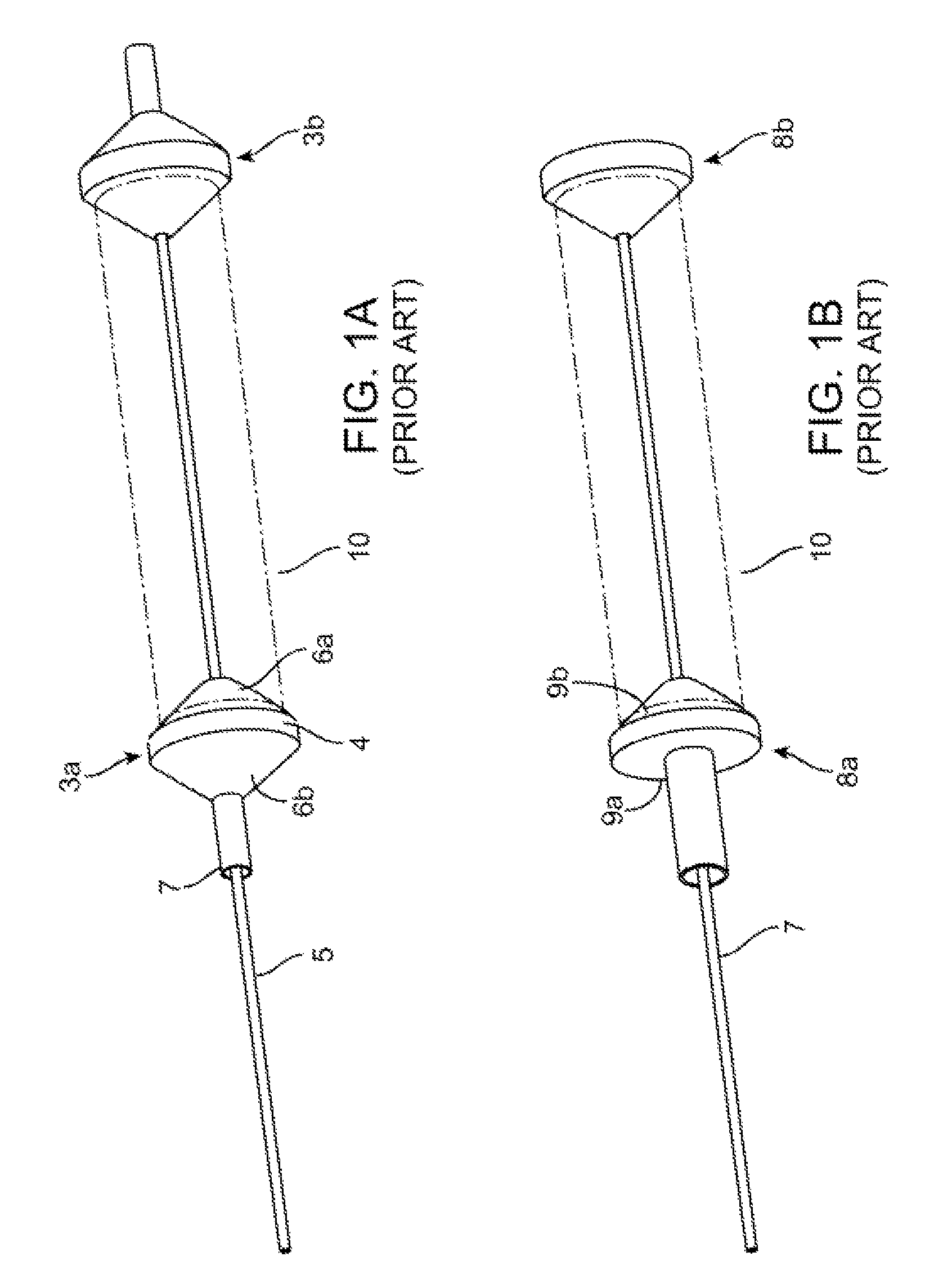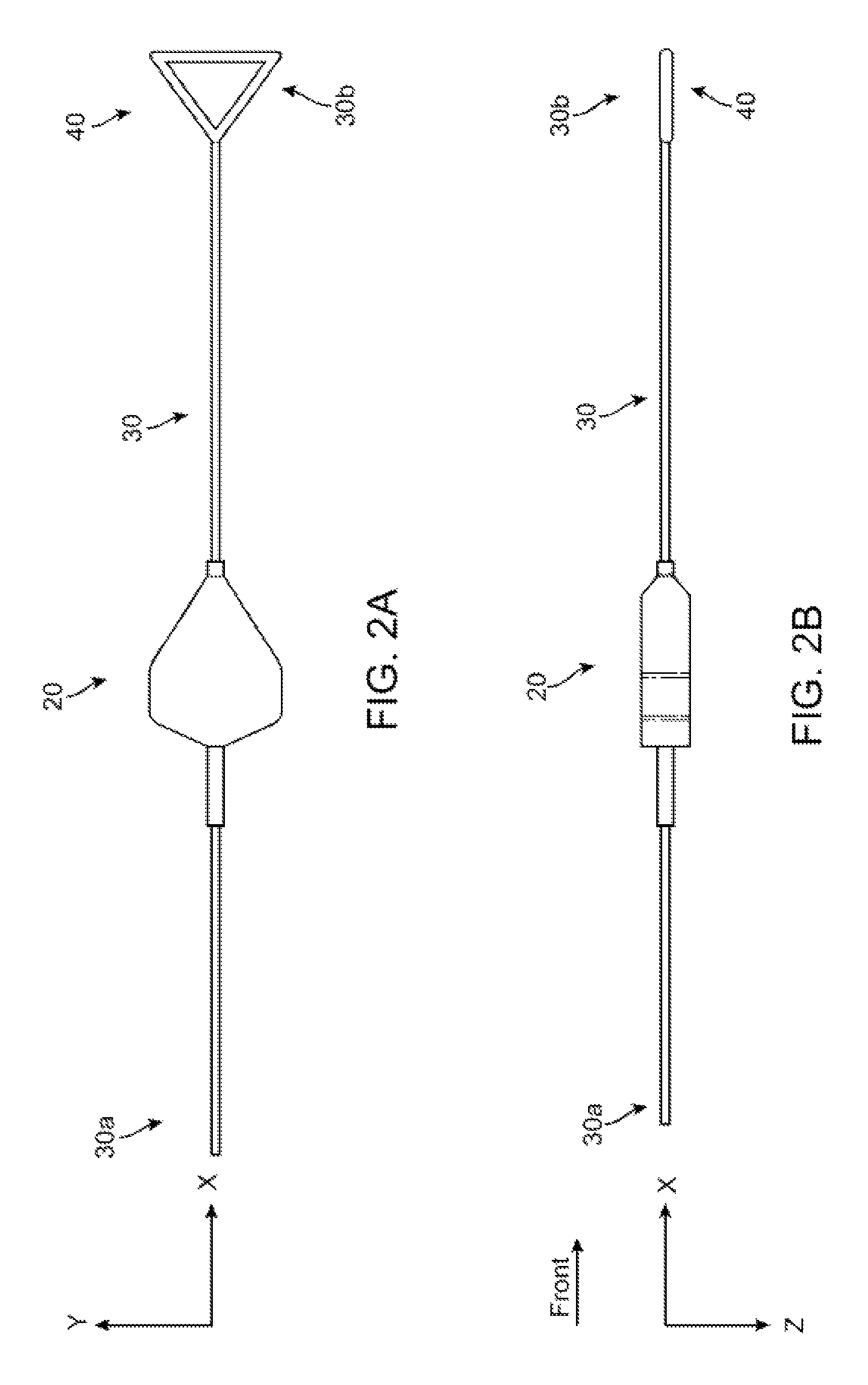Stent holder having a reduced profile
a technology of stent holders and holder plates, applied in the field of implantable medical devices, can solve the problems of limited number of commercially available, unfavorable efficient product development management, and significant testing tim
- Summary
- Abstract
- Description
- Claims
- Application Information
AI Technical Summary
Benefits of technology
Problems solved by technology
Method used
Image
Examples
Embodiment Construction
[0044]For purposes of this disclosure, the following terms and definitions apply:
[0045]The term “about” means 20%, 15%, 10%, 5%, 4%, 3%, 2%, 1.5%, 1%, between 1-2%, 1-3%, 1-5%, or 0.5%-5% less or more than, less than, or more than a stated value, a range or each endpoint of a stated range, or a one-sigma, two-sigma, three-sigma variation from a stated mean or expected value (Gaussian distribution). It is understood that any numerical value, range, or either range endpoint (including, e.g., “about none”, “about all”, etc.) preceded by the word “about” in this disclosure also describes or discloses the same numerical value, range, or either range endpoint not preceded by the word “about”.
[0046]FIGS. 2A-2B show side and top views of a stent holder according to the disclosure. The stent holder includes a retainer 20 separable and capable of being forcibly slid along a mandrel, which in this example is a wire 30. The wire 30 has a first end 30b that receives the retainer 20 and a second ...
PUM
| Property | Measurement | Unit |
|---|---|---|
| outer diameter sizes | aaaaa | aaaaa |
| outer diameter sizes | aaaaa | aaaaa |
| diameter | aaaaa | aaaaa |
Abstract
Description
Claims
Application Information
 Login to View More
Login to View More - R&D
- Intellectual Property
- Life Sciences
- Materials
- Tech Scout
- Unparalleled Data Quality
- Higher Quality Content
- 60% Fewer Hallucinations
Browse by: Latest US Patents, China's latest patents, Technical Efficacy Thesaurus, Application Domain, Technology Topic, Popular Technical Reports.
© 2025 PatSnap. All rights reserved.Legal|Privacy policy|Modern Slavery Act Transparency Statement|Sitemap|About US| Contact US: help@patsnap.com



